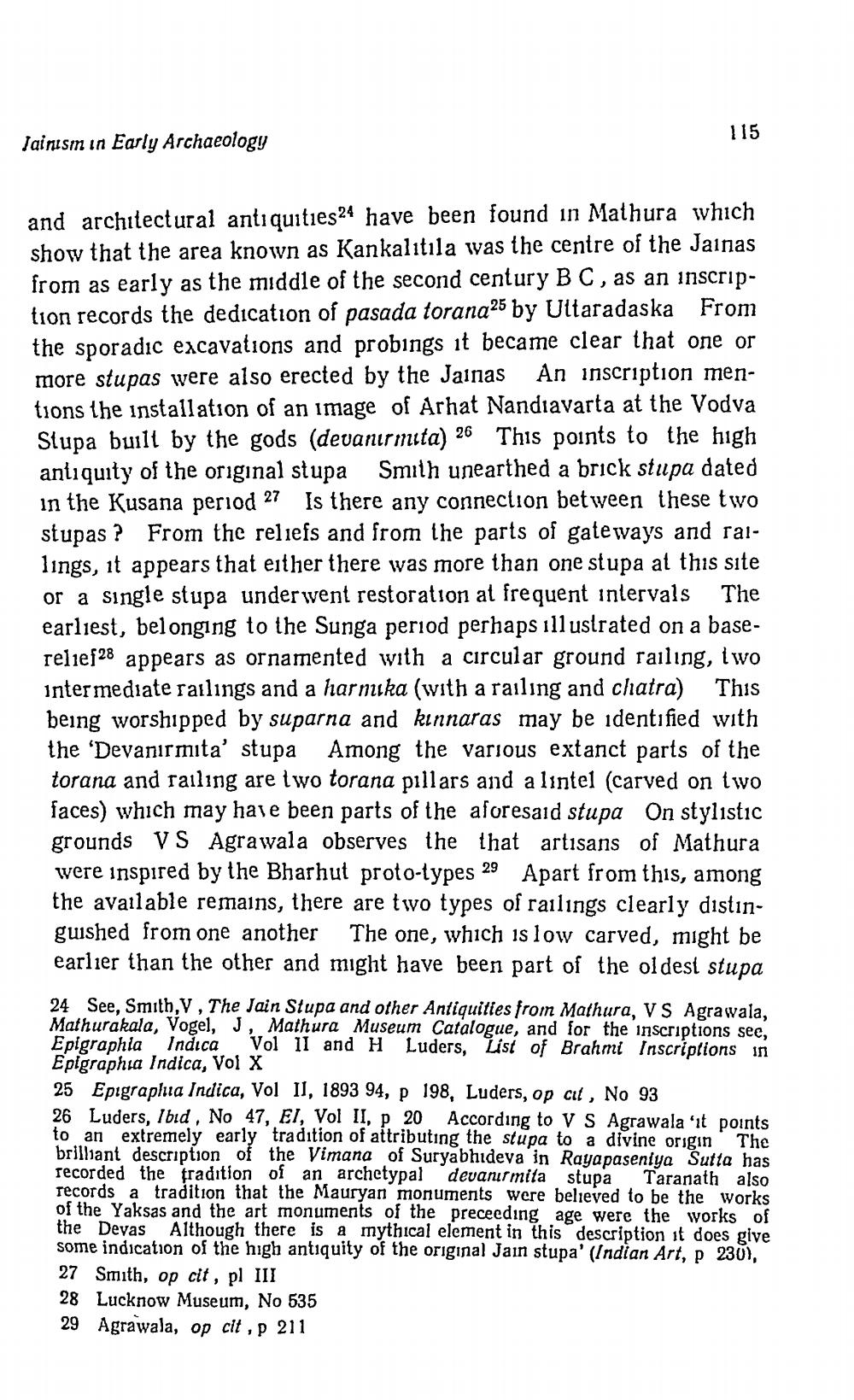________________
115
Jainism in Early Archaeology
and architectural antiquities24 have been found in Mathura which show that the area known as Kankalıtıla was the centre of the Jainas from as early as the middle of the second century BC, as an inscription records the dedication of pasada torana25 by Ultaradaska From the sporadic excavations and probings it became clear that one or more stupas were also erected by the Jainas An inscription mentions the installation of an image of Arhat Nandiavarta at the Vodva Stupa built by the gods (devanır muta) 26 This points to the high antiquity of the original stupa Smith unearthed a brick stupa dated in the Kusana period 27 Is there any connection between these two stupas ? From the reliefs and from the parts of gateways and rallings, it appears that either there was more than one stupa at this site or a single stupa underwent restoration at frequent intervals The earliest, belonging to the Sunga period perhaps illustrated on a baserelief28 appears as ornamented with a circular ground railing, two intermediate railings and a harmuka (with a railing and chatra) This being worshipped by suparna and kinnaras may be identified with the 'Devanırmita' stupa Among the various extanct parts of the torana and railing are two torana pillars and a lintel (carved on two faces) which may have been parts of the aforesaid stupa On stylistic grounds VS Agrawala observes the that artisans of Mathura were inspired by the Bharhut proto-types 29 Apart from this, among the available remains, there are two types of railings clearly distinguished from one another The one, which is low carved, might be earlier than the other and might have been part of the oldest stupa
24 See, Smith, V , The Jain Stupa and other Antiquities from Mathura, VS Agrawala, Mathurakala, Vogel, J, Mathura Museum Catalogue, and for the inscriptions see, Epigraphia indica Vol II and H Luders, List of Brahmi Inscriptions in Epigraphia Indica, Vol X 25 Epigraphua Indica, Vol II, 1893 94, p 198, Luders, op cit, No 93 26 Luders. Ibid, No 47, EI, Vol II, p 20 According to VS Agrawala 'it points to an extremely early tradition of attributing the stupa to a divine origin The brilliant description of the Vimana of Suryabhideva in Rayapaseniya Sutta has recorded the tradition of an archetypal devanurmita stupa Taranath also records a tradition that the Mauryan monuments were believed to be the works of the Yaksas and the art monuments of the preceeding age were the works of the Devas Although there is a mythical element in this description it does give some indication of the high antiquity of the original Jain stupa' (Indian Art, P 230), 27 Smith, op cit, pl III 28 Lucknow Museum, No 535 29 Agrawala, op cit, p 211




